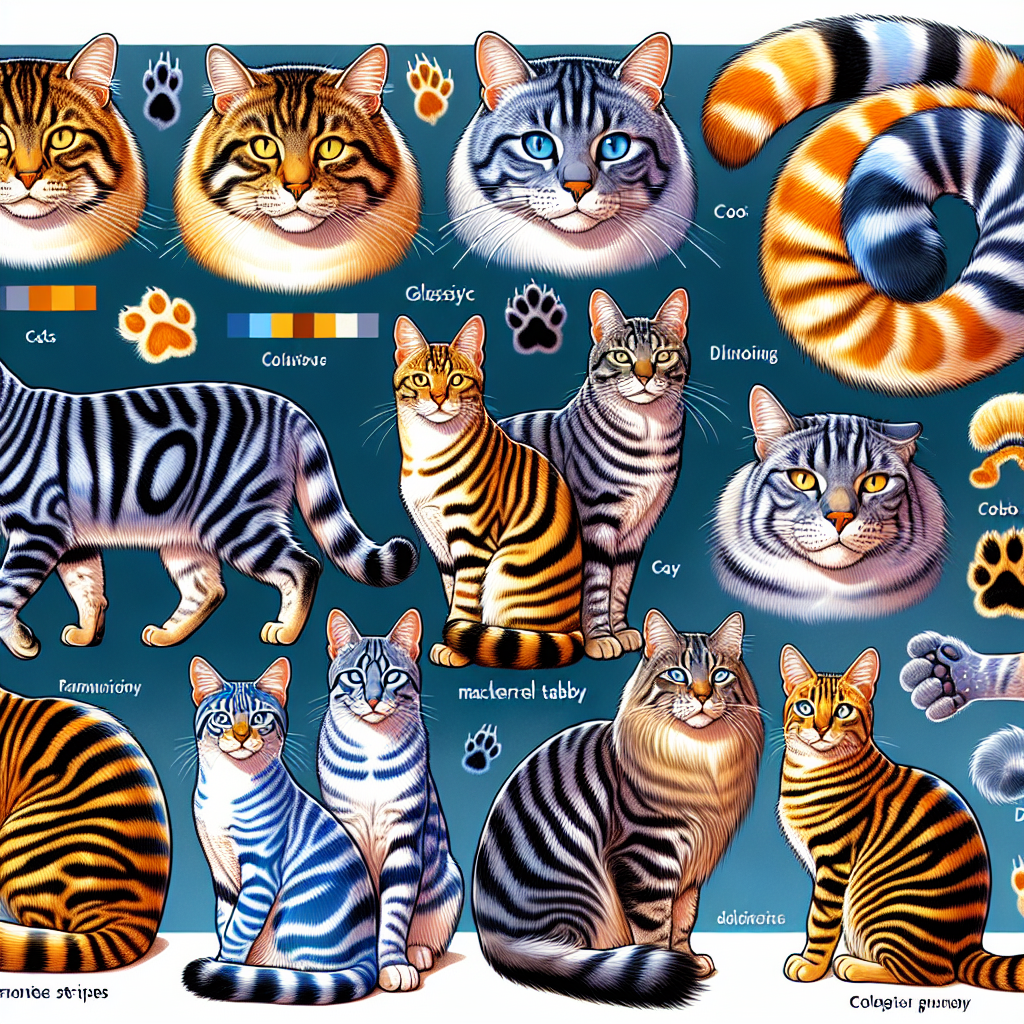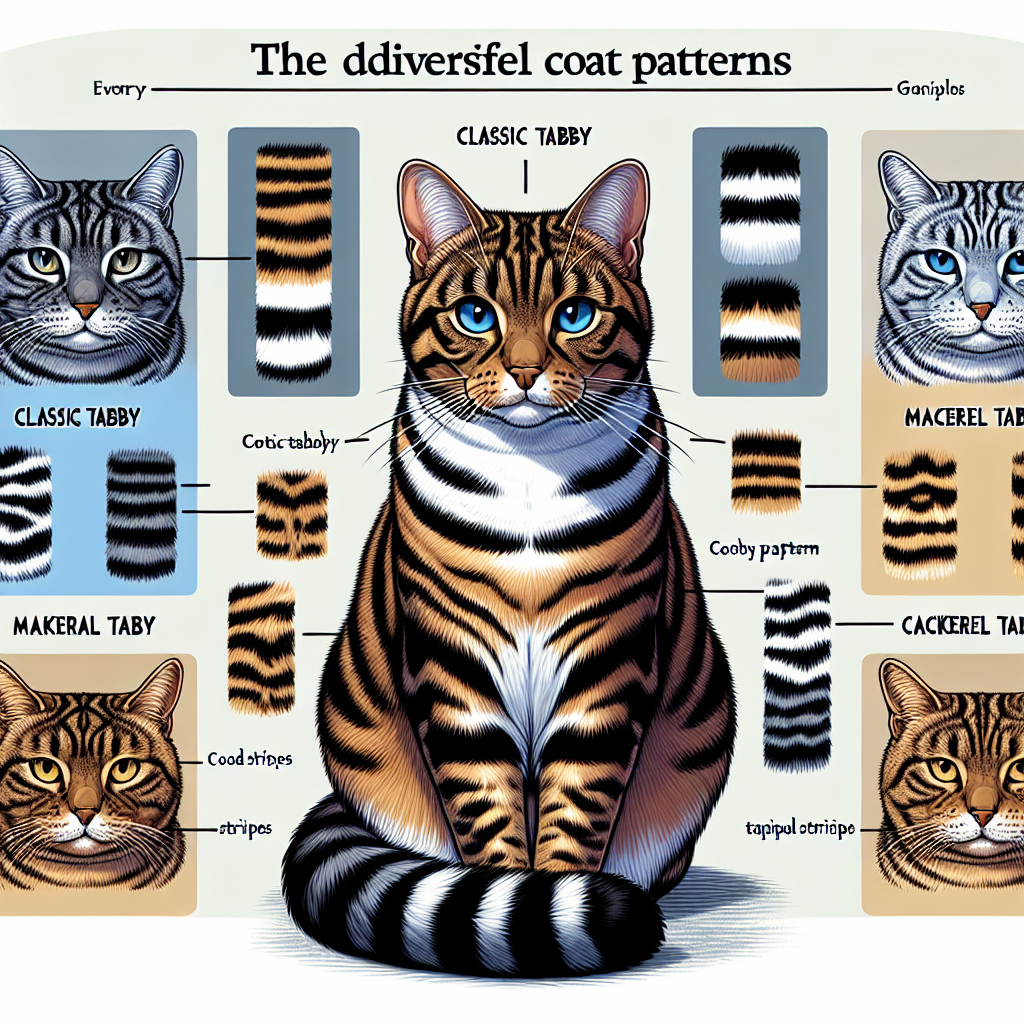Tabby cats come in a variety of captivating colors that can leave you mesmerized. From classic brown tabbies to exquisite silver tabbies, each color brings its own unique charm to these feline beauties. Whether you are a cat lover or simply curious, this article will unveil the stunning palette of colors that adorn the coats of tabby cats, allowing you to appreciate their diverse and enchanting appearances. Embark on a journey into the world of tabby cats as we explore the vibrant spectrum of colors they possess.

Characteristics of Tabby Cats
Tabby cats are known for their unique coat patterns, eye colors, and body markings. These characteristics make them easily distinguishable from other cats. Let’s explore each of these features in more detail.
Coat Patterns
One of the most prominent features of tabby cats is their coat patterns. Tabby cats have a distinct “M” marking on their foreheads, which is often considered a symbol of their tabby heritage. The most common coat pattern is the classic tabby pattern, characterized by swirling stripes that resemble marble or a bullseye. Other common patterns include mackerel tabby, ticked tabby, and spotted tabby. Each of these patterns adds a unique charm to these feline companions.
Eye Colors
Tabby cats come in a wide range of eye colors, adding to their captivating appearance. Their eye colors can vary from bright green to deep amber or even copper. Some tabby cats may even have heterochromia, a condition in which each eye has a different color. Whether it’s the striking emerald eyes or the mesmerizing golden orbs, tabby cats never fail to captivate us with their beautiful eyes.
Body Markings
In addition to their coat patterns, tabby cats often exhibit various body markings that further enhance their beauty. These markings can include white patches on their chest, paws, or face, adding a touch of elegance to their overall appearance. Some tabby cats may also have striped tails or even unique facial markings, making them even more charming and adorable.
Common Tabby Cat Colors
Tabby cats come in a variety of colors, each possessing its own unique charm. Let’s explore some of the most common tabby cat colors:
Brown Tabby
Brown tabby cats are the most commonly seen tabby color. Their coats range from warm, rich browns to lighter shades, and their stripes are usually deep black or dark brown. The brown tabby pattern gives them a classic and timeless look.
Grey Tabby
Grey tabby cats, also known as blue tabbies, have a coat color that ranges from a light silver to a deep charcoal gray. Their coat patterns often exhibit elegant swirls or subtle stripes, creating a captivating appearance.
Orange Tabby
Orange tabby cats, often referred to as ginger cats, have warm, vibrant coats that range from light peachy shades to deep oranges. Their coat patterns can vary, but they typically have bold, distinct stripes that truly make them stand out.
Cream Tabby
Cream tabby cats have a soft and delicate coat color, ranging from creamy white to a pale, warm cream shade. Their coat patterns can be a combination of soft stripes or marbling, adding to their overall charm and elegance.
Blue Tabby
Blue tabby cats, also known as gray-blue tabbies, have a unique coat color that resembles a bluish-gray hue. Their coat patterns can vary, exhibiting a range of swirls, stripes, or spots, and their overall appearance is both enchanting and distinctive.
Silver Tabby
Silver tabby cats have a shimmering, silver-colored coat that adds an air of sophistication to their appearance. Their coat patterns typically consist of black stripes, creating a stunning contrast against the silver background.
Torbie Tabby
Torbie tabby cats, also known as patched tabbies, have a combination of tabby patterns and tortoiseshell coloring. Their coats feature a mix of tabby stripes and patches of browns, blacks, and oranges, creating a unique and colorful mosaic.
Calico Tabby
Calico tabby cats have a coat pattern that combines tabby markings with patches of white and other colors, such as black and orange. Their coats are often a delightful mix of tabby stripes and larger patches, creating a beautiful and eye-catching appearance.
Tortoiseshell Tabby
Tortoiseshell tabby cats, also known as tortie tabbies, exhibit a combination of tabby patterns and tortoiseshell coat coloring. Their coats are a beautiful mosaic of tabby stripes and patches of black, orange, and sometimes white, giving them a distinct and unique appearance.
Unusual Tabby Cat Colors
While the above-mentioned tabby colors are more common, there are also some rarer and more unusual tabby cat colors that are equally fascinating:
Chocolate Tabby
Chocolate tabby cats have a sumptuous and rich brown coat color, resembling the color of chocolate. Their coat patterns can vary, showcasing beautiful swirls or stripes against the deep chocolate background.
Lilac Tabby
Lilac tabby cats have a stunning and delicate coat color that resembles a pale purple or lavender hue. Their coat patterns can vary, from subtle stripes to swirling patterns, giving them an ethereal and enchanting appearance.
Cinnamon Tabby
Cinnamon tabby cats have a warm and reddish-brown coat color reminiscent of cinnamon spice. Their coat patterns can range from bold stripes to delicate swirls, creating a unique and captivating look.
Fawn Tabby
Fawn tabby cats have a light tan or beige coat color that resembles the color of a young deer, hence the name “fawn.” Their coat patterns can vary, showcasing intricate stripes or subtle swirls against the soft fawn background.
Apricot Tabby
Apricot tabby cats have a delightful and warm apricot-colored coat. Their coat patterns can vary, exhibiting a combination of swirls, spots, or stripes against the vibrant apricot backdrop, making them truly stand out.
Tabby Cat Color Genetics
Understanding tabby cat colors requires some insight into the genetics behind these beautiful coat variations. The following factors contribute to the diversity of tabby cat colors:
Agouti Gene
The agouti gene is responsible for the distribution of pigments in a cat’s fur. Tabby cats have a specific variant of the agouti gene that produces the tabby coat pattern. This gene determines how the pigments are distributed in the individual hairs, resulting in the unique tabby patterns we see.
Melanin and Pigmentation
Melanin, a pigment responsible for coloration, plays a vital role in tabby cat coat colors. The distribution and concentration of melanin determine the intensity and shade of the colors seen in tabby cats. The variations in melanin production and distribution contribute to the wide range of tabby coat colors we observe.
Inheritance and Variations
Tabby cat colors are influenced by complex genetic inheritance patterns. Different combinations of genes inherited from the parents determine the specific coat colors, patterns, and markings seen in tabby cats. The interaction between various genes can lead to a diverse set of outcomes, resulting in the incredible array of tabby cat colors we appreciate.

Health Conditions Associated with Tabby Cats
While tabby cats are generally healthy and robust, there are a few health conditions that are more commonly seen in this feline population. Being aware of these conditions can help ensure the well-being of your tabby companion. Here are two health conditions associated with tabby cats:
Dilated Cardiomyopathy (DCM)
Dilated Cardiomyopathy, or DCM, is a heart condition that can affect tabby cats. This condition involves the enlargement and weakening of the heart, leading to decreased cardiac function. It is important to monitor your tabby cat’s heart health and consult with a veterinarian for regular check-ups and appropriate preventive measures.
Polycystic Kidney Disease (PKD)
Polycystic Kidney Disease, or PKD, is a genetic disorder that can affect tabby cats, among other breeds. This condition causes the formation of numerous fluid-filled cysts in the kidneys, ultimately leading to kidney dysfunction. Regular veterinary check-ups and genetic testing can help identify and manage PKD in your tabby cat.
By understanding these potential health conditions, you can take proactive steps to ensure the well-being of your tabby cat and provide the appropriate care and support they need.
Tabby cats are undoubtedly captivating creatures, with their unique coat patterns, eye colors, and body markings. Whether you have a classic brown tabby, a striking silver tabby, or an unusual chocolate tabby, each carries its own charm and personality. By appreciating the diversity of tabby cat colors and understanding their genetic foundations, we can truly admire these enchanting feline companions. Remember to cherish and care for your tabby cat, ensuring their health and happiness throughout their lives.

